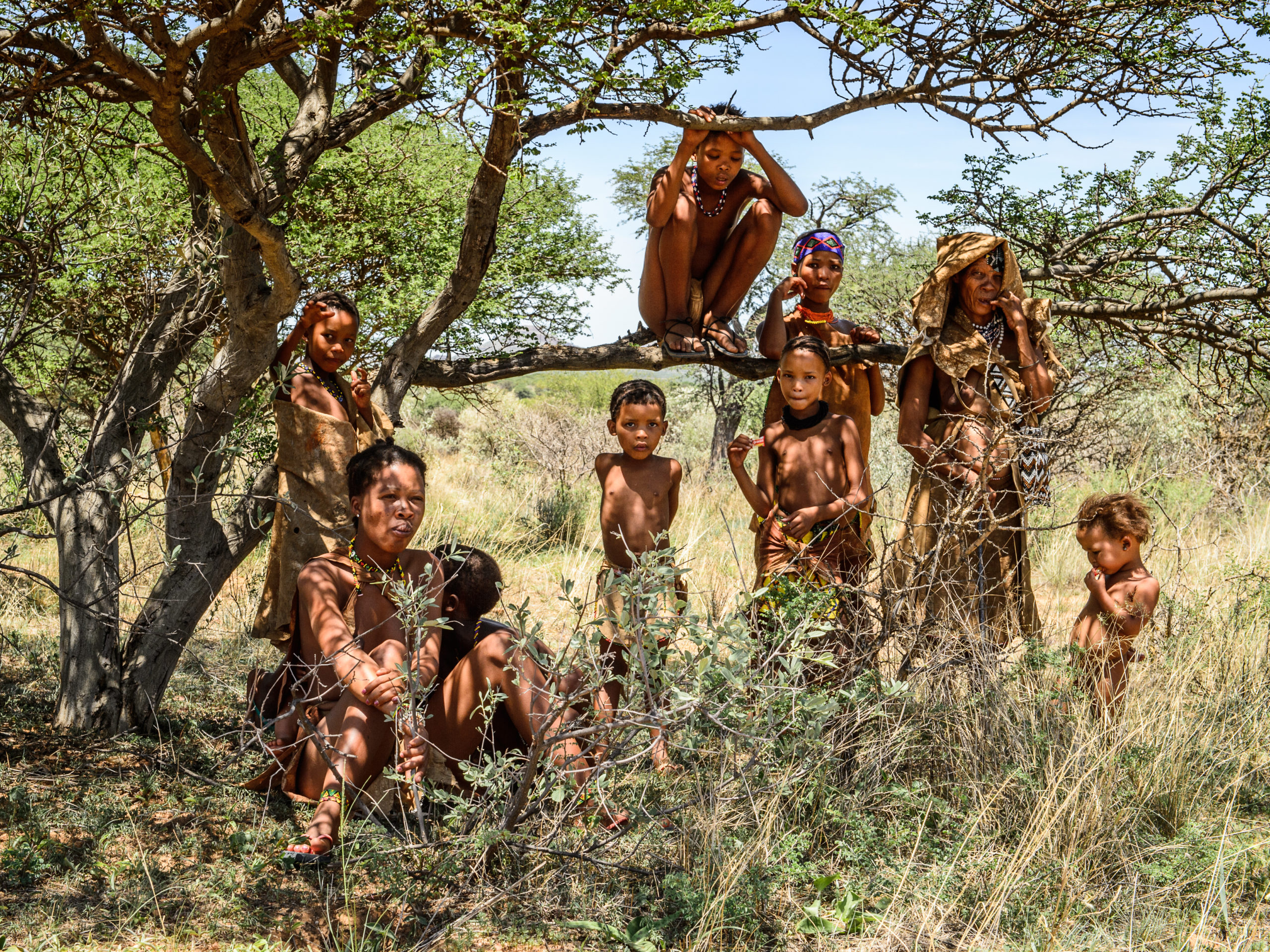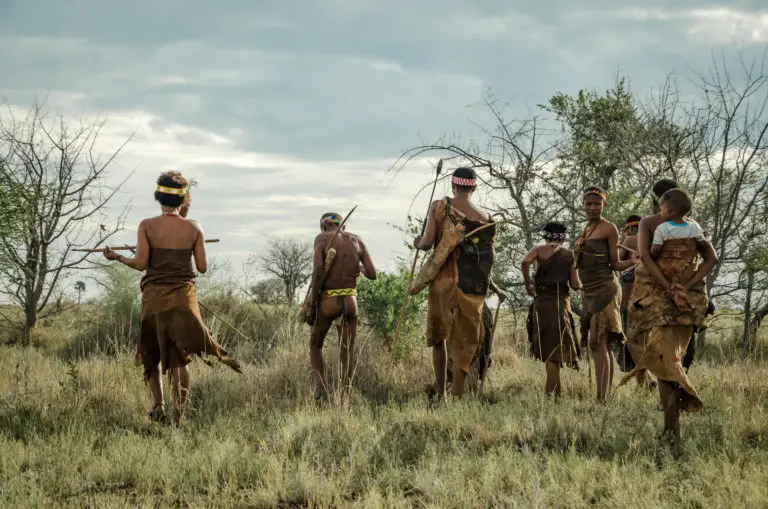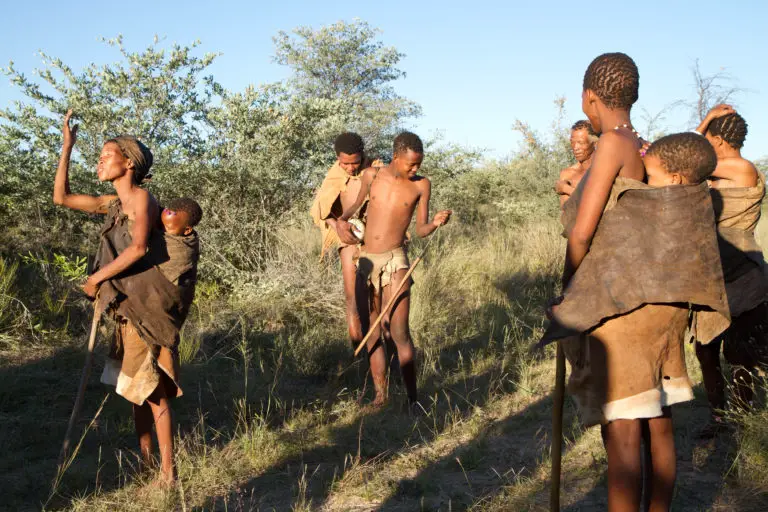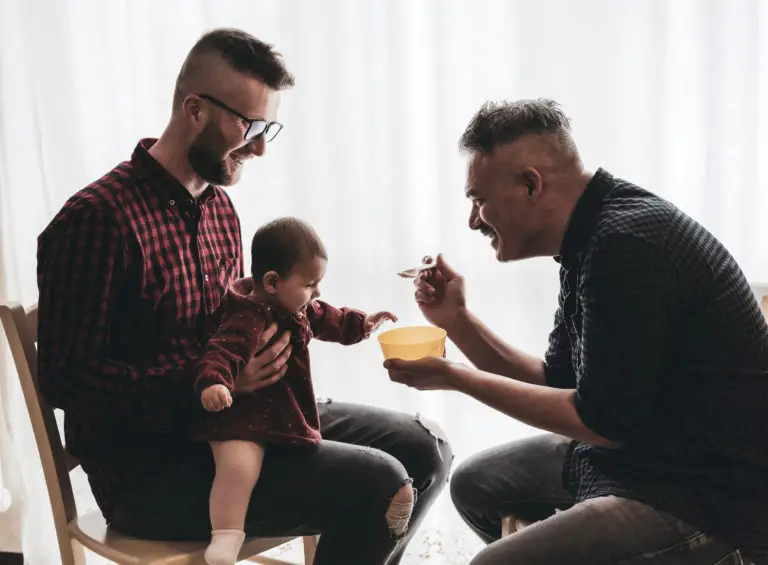In today’s Western societies, the concept of the nuclear family, composed of two parents and their children, has been the prevailing model for decades. However, recent research challenges the assumption that this traditional family structure is in harmony with our evolutionary history.
According to groundbreaking studies led by Dr. Nikhil Chaudhary, an evolutionary anthropologist at the University of Cambridge, children may possess an “evolutionary priming” to anticipate more comprehensive care and attention than what two parents alone can provide.

This revelation emerged from the team’s extensive research among contemporary hunter-gatherer communities, shedding light on alternative child-rearing systems that our ancestors might have practiced. The study delves into the intriguing culture of the Mbendjele, a hunter-gatherer community residing in the northern rainforests of the Republic of Congo. These people, living as immediate-return hunter-gatherers, have a unique lifestyle characterized by mobility, egalitarianism, and communal child-rearing practices.
Let’s explore the fascinating findings of Dr. Chaudhary and his colleagues, who discovered that the Mbendjele rely on a network of caregivers to nurture their infants and children. Each child in their community receives an average of nine hours of attentive care daily, provided by as many as ten different individuals, sometimes even reaching up to twenty. This communal approach to child care challenges the conventional nuclear family model that dominates our societies.
The Traditional Nuclear Family Model
For decades, the conventional two-parent family has been the cornerstone of Western societies. This model typically consists of a mother, a father, and their children living together under one roof. It has long been upheld as the ideal family structure, with its roots tracing back to the 1950s.
In this traditional family setup, the roles are often clearly defined, with one parent taking on the role of the primary breadwinner and the other primarily responsible for homemaking and childcare. The children are nurtured and cared for by their biological parents, and the family unit operates as a self-contained entity, relying on these two individuals to provide emotional, financial, and practical support.

This model has its merits, offering stability and familiarity to those who adhere to it. However, as we delve into the research conducted by Dr. Nikhil Chaudhary and his team, we’ll explore whether this conventional structure aligns with our evolutionary history and whether it adequately meets the needs of children in today’s world.
The Study of Hunter-Gatherer Communities
In Western societies, the nuclear family model, consisting of two parents and their children, has been the prevailing standard since the 1950s. However, recent research indicates that this expectation of two parents may not align with our evolutionary history.
According to a study led by Dr. Nikhil Chaudhary, an evolutionary anthropologist from the University of Cambridge, children may have an “evolutionary priming” to expect more attention and care from a broader group of individuals, which exceeds the capabilities of just two parents.
Dr. Chaudhary and his team arrived at this conclusion through their investigation into contemporary hunter-gatherer societies.
“For more than 95 percent of our evolutionary history we lived as hunter-gatherers. Therefore, contemporary hunter-gatherer societies can offer clues as to whether there are certain childrearing systems to which infants, and their mothers, may be psychologically adapted,” explained Dr. Chaudhary in a statement.
To explore this further, the researchers focused on the Mbendjele, a group of hunter-gatherers residing in the northern rainforests of the Republic of Congo. The Mbendjele are immediate-return hunter-gatherers, meaning they do not store food and lead highly mobile and egalitarian lifestyles. They primarily rely on hunting, fishing, and honey collection for sustenance, but have recently engaged in some market activities as well.
Within the Mbendjele community, families reside in multifamily camps and depend on a network of caregivers to assist in raising their infants and children.
Multifamily Camps and Network of Caregivers
On average, each child in this community received approximately nine hours of attentive care from around 10 different individuals, sometimes as many as 20. When a child cried, there was a significant number of people who would respond, typically within 25 seconds. The results also showed that biological mothers only needed to intervene in around 50 percent of crying episodes. Furthermore, older kids and adolescents also played a role in caring for the younger members of the community.
The researchers emphasize that contemporary hunter-gatherers should not be regarded as “living fossils,” but rather as modern human populations with subsistence modes that overlap with those of pre-Neolithic populations. Therefore, their social structures and childcare approaches offer valuable insights into our broader evolutionary history.
Most studies on child attachment have predominantly focused on Western, educated, industrialized, rich, and democratic (WEIRD) populations. However, the authors contend that such research has faced criticism for overemphasizing the importance of sensitive responsive caregiving and limiting our understanding of multiple nonmaternal caregiving.
WEIRD countries typically place most of the childcare responsibilities on parents alone, leading to exhaustion and depression. The stark contrast with the communal living arrangements seen in hunter-gatherer societies, such as the Mbendjele, suggests that the nuclear family model is out of touch with our ancestral practices.
What does this mean for the Western world?
Although these findings provide important insights, Dr. Chaudhary urges caution, stating, “Many aspects of our psychology have evolved to be flexible rather than best suited to one specific way of life. The extent to which this is true for childrearing is still debated.”
Nevertheless, the researchers highlight the need for affordable, high-quality childcare support in WEIRD countries that goes beyond mere supervision. Maintaining higher caregiver-to-child ratios and ensuring stability among key caregivers in nurseries and institutional care settings may be crucial in minimizing risks to the well-being of children and parents.
“Support for mothers also has numerous benefits for children such as reducing the risk of neglect and abuse, buffering against family adversity, and improving maternal wellbeing which in turn enhances maternal care,” added Dr. Annie Swanepoel.
Dr. Chaudhary also emphasizes the importance of making childcare a priority in government budgets: “As a society, from policy makers to employers to healthcare services, we need to work together to ensure mothers and children receive the support and care they need to thrive.”
Child Rearing and Socialization: The Benefits of Communal Care
In hunter-gatherer communities like the Mbendjele, the process of child rearing and socialization differs significantly from the conventional Western model. Here, children are not confined to the exclusive care of their biological parents but are raised collectively by the entire community. This communal approach to child rearing has profound implications for how children are nurtured and socialized.
Children in hunter-gatherer communities grow up surrounded by a multitude of caregivers, each imparting their knowledge, skills, and values. They learn from grandparents, aunts, uncles, older siblings, and other community members. This rich tapestry of influence exposes them to a wide range of experiences and perspectives from an early age.
- The Benefits and Challenges of Communal Child-Rearing
Communal child-rearing offers several noteworthy advantages. Firstly, it alleviates the burden on individual parents, reducing the stress and exhaustion often associated with sole responsibility for childcare. In this communal system, parents have the support of an extended network, enabling them to share the responsibilities of nurturing and educating their children.
Furthermore, communal child-rearing provides children with a diverse and holistic education. They benefit from the collective wisdom of their community, learning various skills, traditions, and cultural knowledge. This exposure fosters a well-rounded development that extends beyond academic learning.
However, communal child-rearing is not without its challenges. Coordinating the efforts of multiple caregivers requires effective communication and cooperation within the community. Additionally, it may be challenging for parents to maintain a strong bond with their children when they are not the sole providers of care.
- Impact on Child Development
The impact of communal child-rearing on child development is a topic of great interest. Studies among hunter-gatherer communities suggest that children raised in this communal environment develop strong social skills, empathy, and adaptability. They learn to navigate a complex social network and build relationships with a wide range of individuals.
Moreover, communal child-rearing emphasizes collective responsibility and cooperation, fostering a sense of community and interdependence from a young age. This differs from the individualistic tendencies often associated with nuclear families.
Gender Roles and Contributions: Equality in Hunter-Gatherer Communities
One of the most intriguing aspects of hunter-gatherer communities like the Mbendjele is their approach to gender roles and the division of labor. Unlike the traditional nuclear family model prevalent in Western societies, where gender roles are often rigidly defined, these communities exhibit a more egalitarian distribution of responsibilities.
In hunter-gatherer societies, the division of labor is not strictly based on gender. Both men and women contribute to activities such as hunting, fishing, gathering, and childcare. This equitable sharing of tasks reflects a deep understanding of each individual’s strengths and skills rather than adhering to traditional gender norms.
- How These Roles Differ from Traditional Nuclear Families
The contrast with traditional nuclear families is stark. In many Western societies, the roles of men and women have historically been defined by stereotypes. Men were typically seen as the breadwinners, while women were primarily responsible for homemaking and childcare. However, in hunter-gatherer communities, such rigid distinctions are absent.
Women in these communities actively participate in hunting and gathering, which challenges the conventional perception of gender roles. Men, on the other hand, are equally involved in childcare and domestic tasks. This fluidity in roles not only promotes gender equality but also ensures that each member of the community can contribute their unique skills to benefit the group as a whole.
- Implications for Gender Equality
The implications of these gender roles in hunter-gatherer communities extend beyond their immediate context. They provide a valuable perspective on gender equality and challenge the traditional norms that have often limited opportunities for both men and women.
In societies where gender roles are more fluid and based on individual capabilities rather than preconceived notions of masculinity and femininity, we witness a greater degree of gender equality. Women have the opportunity to engage in activities typically considered male-dominated, while men actively participate in caregiving and nurturing roles.
As we examine the gender roles in hunter-gatherer communities, we are prompted to reflect on our own society’s approach to gender equality. How can we learn from these communities to foster a more inclusive and equitable environment for all individuals, regardless of their gender? This is a question we will explore further as we continue our journey into the world of alternative family structures.
Rethinking Family and Society
In our exploration of the hunter-gatherer communities, exemplified by the Mbendjele, we have embarked on a journey that challenges the conventional notions of family, gender roles, and child rearing. These communities offer us a glimpse into a world where the nuclear family model is replaced by extended families, gender roles are fluid, and communal child-rearing is the norm.
This thought-provoking research conducted by Dr. Nikhil Chaudhary and his team reminds us that the nuclear family, as prevalent in Western societies, may not be the only path to successful child-rearing and societal harmony. The extended family structure provides a robust support network for parents and enriches children’s lives with a diversity of perspectives and experiences.
Gender equality is another critical aspect that these communities illuminate. By rejecting rigid gender roles and allowing individuals to contribute based on their strengths, they demonstrate that true equality can flourish.
As we conclude our journey, we must consider the implications for our own society. Can we learn from these alternative family structures to create a more inclusive and equitable world? How can we adapt our approaches to child rearing and gender roles to benefit all individuals?
Ultimately, the research into hunter-gatherer communities offers a fresh perspective on family life and inspires us to question deeply ingrained norms. It reminds us that diversity in family structures and gender roles can lead to stronger communities and a more harmonious society. As we move forward, let us strive for a world that values the contributions of all its members, regardless of their family composition or gender, and where every child has the opportunity to thrive in a nurturing and supportive environment.
Sources:
Children May Be ‘Evolutionarily Primed’ to Need More Than 2 Parents
Hunter-Gatherers (Foragers) by Carol R. Ember
Hunter-Gatherer Culture
A study of the Mbendjele Yaka pygmies of Congo-Brazzaville

This Site Was Inspired By An Interest in Protecting the Environment:
We had the privilege and joy of learning from Dr. Charlie Stine who instilled a love for the natural world through incredible field trips with the Johns Hopkins Odyssey Certificate program in Environmental Studies. At the time, the program was endorsed by the Maryland Department of Natural Resources. Sadly, after Dr. Stine retired, the program was phased out. We hope that we honor his legacy by shining a bright light on environmental issues and sharing good news about the success of various conservation programs when possible.




